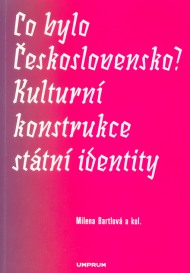The study discusses the image of the city of Ostrava in photographic publications issued in the period of state socialism and aimed to capture and present the daily life of an exemplary industrial socialist city. The study offers a critical understanding of the socialist city as a visual construct communicating the ideological contents and reflecting their (historical) transformations, based on the example of the two key themes of visual representation – the urban space and the role of men and women in this space. Photographic books and collections of photographs are part of the official discourse about Ostrava and the surrounding countryside, its past, present and prospects for the future, and they enable the analysis and critical evaluation of this discourse. The materials show that the contemporary official visual representation of Ostrava forms a stylistically and thematically coherent canon of a urban landscape where people, coal and steel co-exist in harmony. However, there are semantic (and content) shifts even in this canon, mainly in portraying the roles of women and men. While the role of men as workers embodying creative energy, helping the city arise and last, is reinforced or does not change in the photographs, the role of women is changing with the gradually weakening reform of the gender relations and the advent of pro-family policy in the period of normalization.
Chapter in monograph
Gibas, Petr, Nyklová, Blanka. 2017. „Socialistické průmyslové město ve fotografii: dva pohledy na proměny ideologické konstrukce.“ Pp. 171-182, M. Bártlová et al. Co bylo Československo? Kulturní konstrukce státní identity. Praha: UMPRUM. ISBN 978-80-87989-23-4.
Topics:
gender
kultura
životní prostředí


Newsletter
Facebook
X
Tweets by SociologickyNewsletter